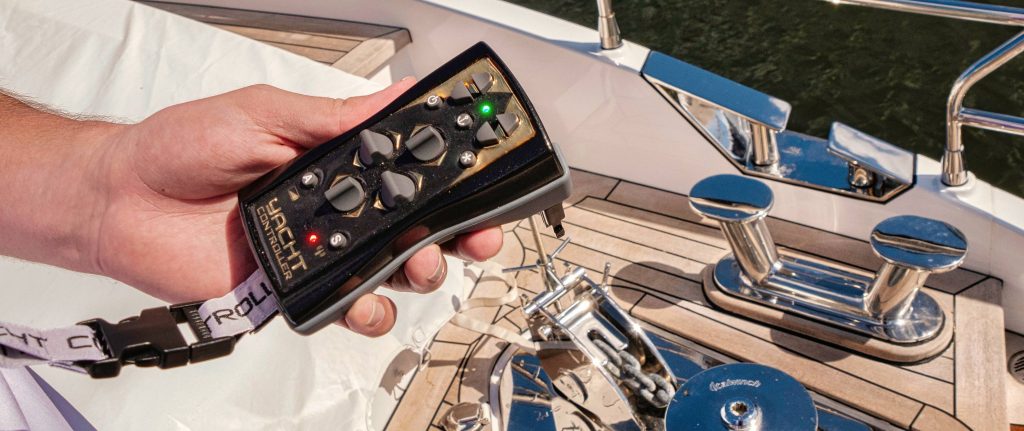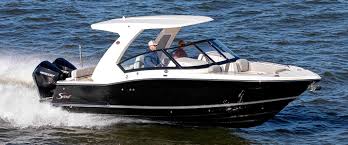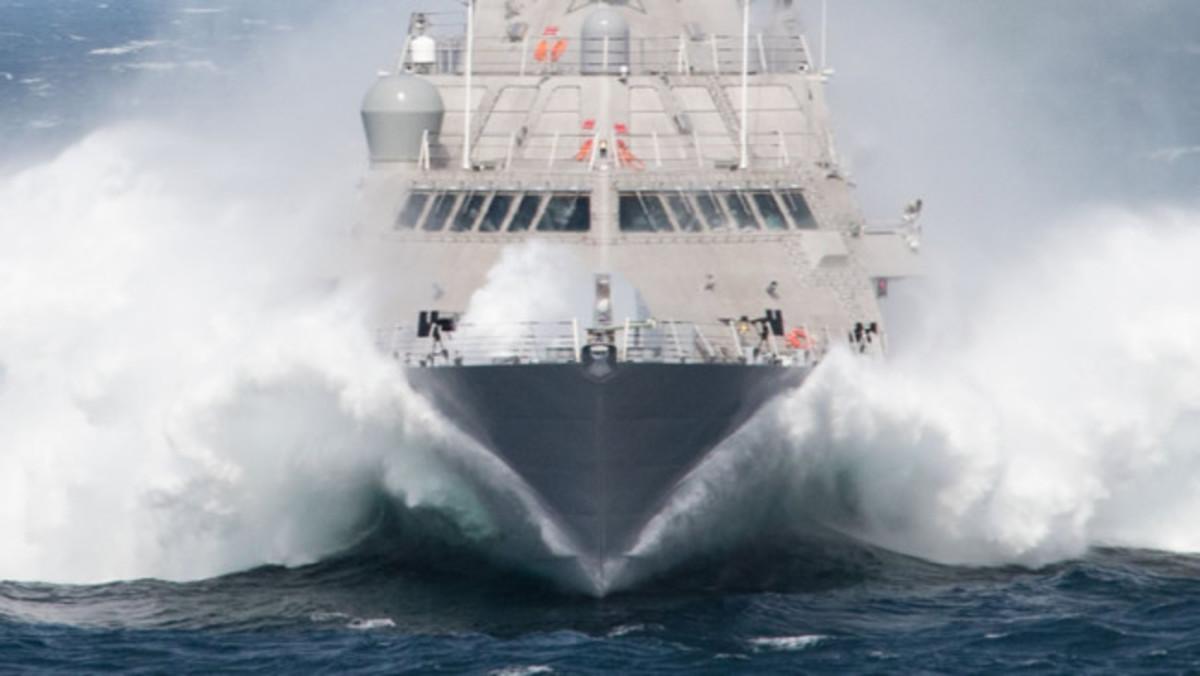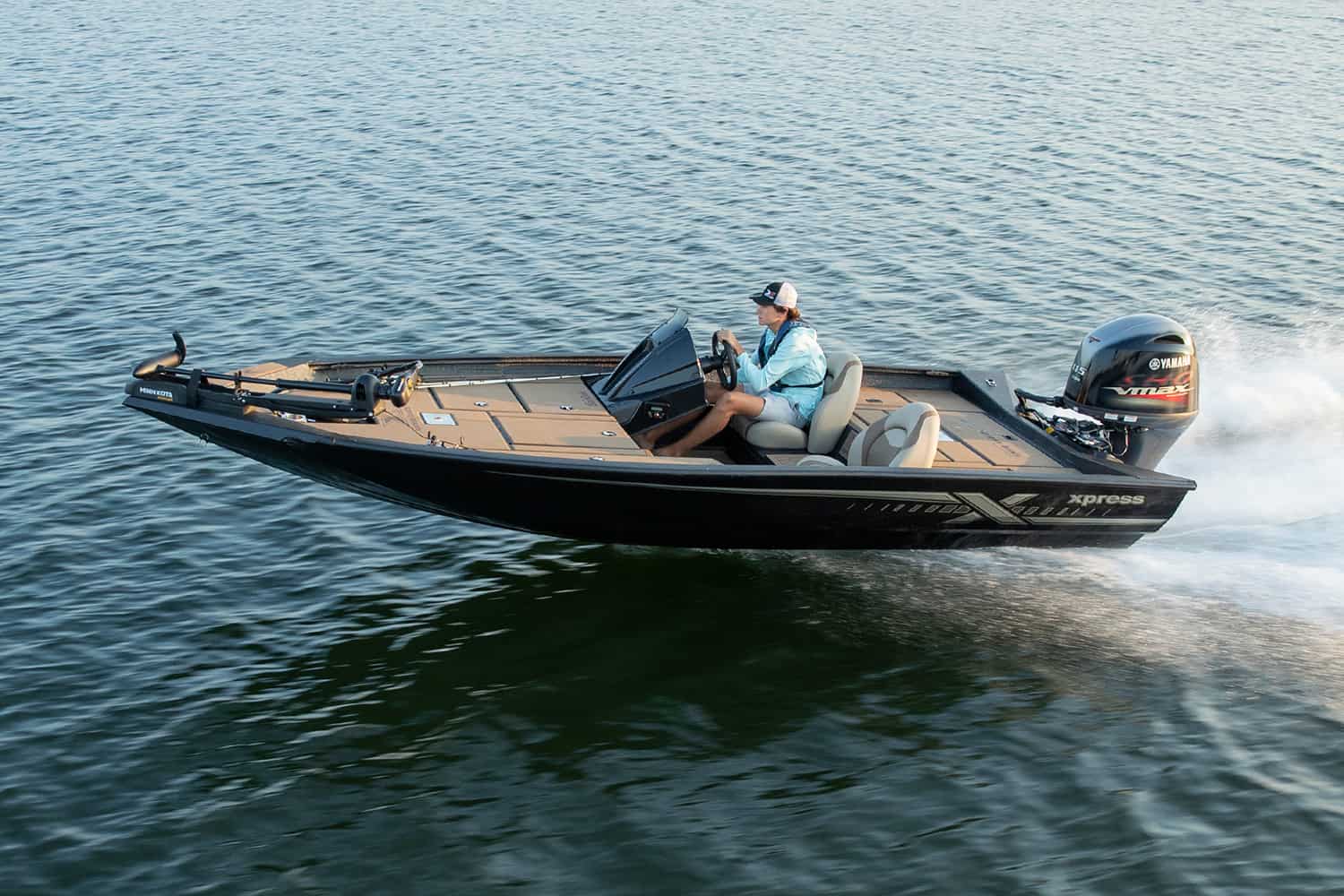Yacht Controller: Enhancing Navigation and Maneuvering Experience
Yacht controllers are handheld wireless devices that provide a convenient and innovative solution for yacht owners and operators to control their vessels with precision and ease.

These advanced systems allow for seamless docking and maneuvering, making the process more efficient and safe.
With a range of different technologies and features available, yacht controllers can be tailored to suit the needs of various yacht types and brands.
The primary purpose of a yacht controller is to offer enhanced control during docking and close-quarters maneuvering.

By integrating with the yacht's existing control systems, the user can wirelessly operate all essential functions, such as engines, thrusters, and anchors, while maintaining freedom of movement around the vessel.
This eliminates the need to remain at the helm station, allowing the user to have the most optimal vantage points and situational awareness during critical moments of mooring.

Key Takeaways
- Yacht controllers provide seamless wireless control for docking and close-quarter maneuvering.
- These devices integrate with the vessel's existing control systems, allowing wireless control over engines, thrusters, and anchors.
- Increased situational awareness and freedom of movement can greatly improve docking and handling processes for yacht owners and operators.
Fundamentals of Yacht Controllers
Types of Yacht Controllers
There are various types of yacht controllers available in the market, designed to meet the diverse needs of yacht owners. The most common types include:
- Handheld Wireless Controllers: Wireless devices, such as the Yacht Controller, allow yacht owners to control their vessels remotely. These devices are portable, lightweight, and compatible with most yacht brands.
- Wired Joystick Controllers: These controllers, such as the Yacht Joystick Control System (JCS), are mounted at the helm and offer precise maneuvering capabilities through a simple joystick interface.
- Touchscreen Devices: Some modern yacht controllers feature touchscreen interfaces, often integrated with advanced navigation systems, to enhance user experience and provide added functionality.
How Yacht Controllers Work
Most yacht controllers use a combination of joysticks, thrusters, and engines to control the vessel's movement.
The main components of a yacht controller system include:
- Joystick: This is the primary input device used to control the yacht by specifying the desired movement vector. A joystick allows for smooth and precise control over the vessel's direction, speed, and orientation.
- Thrusters: These are powerful motorized devices that propel the yacht in the desired direction. Thrusters can be of different types, such as bow, stern, and side, depending on their placement on the vessel.
- Control Module: This component takes the input from the joystick and sends it to the thrusters and engines, directing the yacht's movement as per the user's commands.
The controllers may also have additional features, such as dual-band security and proportional control, which enhance the safety and ease of yacht maneuvering, respectively.
Advantages of Using Yacht Controllers
Some of the notable benefits of using yacht controllers include:
- Enhanced maneuverability: Yacht controllers provide yacht owners with unparalleled control over their vessels, enabling them to navigate tight spaces and complex waterways with ease.
- Increased safety: These devices help improve situational awareness, allowing users to maintain a safe distance from obstacles and other vessels, especially during challenging docking or mooring situations.
- Ease of use: Many yacht controllers are designed with user-friendliness in mind, featuring intuitive interfaces and clear operational instructions, thus simplifying the sailing experience for both seasoned and novice yacht owners.
- Compatibility: Many yacht controllers, such as the Yacht Controller, are compatible with a wide range of yacht brands and models, ensuring seamless integration with existing yacht systems.
Yacht Controller Technologies
RF Technologies in Yacht Controllers
Radio Frequency (RF) technologies have been extensively employed in yacht controllers to facilitate reliable wireless communication between the handheld remote and the yacht's onboard systems.
These technologies allow yacht captains to control their vessels remotely, from various points on the boat.
RF technologies, specifically in the form of dual-band systems, offer increased safety and reliability, as they operate on multiple frequencies simultaneously.
This ensures constant communication between the controller and the yacht, reducing the risks of signal loss or interference from other wireless systems.
Wi-Fi and Dual-Band Systems
In addition to RF technologies, yacht controller systems like Maximo™ and Supremo™ have begun to incorporate Wi-Fi capabilities in their functionality.
Utilizing both Wi-Fi and dual-band systems, these yacht controllers can establish seamless communication between the handheld remote and the yacht's control system.
By combining these two technologies, yacht controllers achieve increased responsiveness and security.
Wi-Fi technology enables users to set and modify control parameters from any smart device, ensuring more precise control of the vessel.
Throttle and Joystick Integration
Modern yacht controllers are designed to integrate with a yacht's throttle and joystick systems, providing seamless control over the vessel's movements.
This level of integration allows yacht owners to safely maneuver their boats with precision and ease.
Yacht controller systems such as the Yacht Controller unit are compatible with a wide range of boat manufacturers and models.
With over 27,000 controllers in service on more than 265+ boat brands, these controllers have become an essential tool for modern yacht owners seeking enhanced control and safety.
Utilizing advanced RF, Wi-Fi, and dual-band technologies, along with integration of the yacht's throttle and joystick systems, yacht controllers offer a sophisticated and reliable solution for remote vessel operation.
Docking with Yacht Controllers
Docking Systems and Assist Features
Yacht Controllers are advanced devices that help boaters dock their vessels with ease. These wireless remote control systems allow users to steer, control propulsion, and utilize their boat's thrusters for enhanced maneuverability during docking.
Two popular options on the market are the Yacht Controller and Dockmate.
Both systems typically cost between $10,000 and $15,000, depending on the boat's configurations and desired features, such as the addition of a joystick.
Maneuvering in Tight Spaces
One of the challenges faced by yacht owners is maneuvering the vessel in tight spaces.
This is where the joystick control feature found in some Yacht Controllers proves its worth.
With a joystick-equipped controller, the user can easily control the boat's forward and reverse propulsion, as well as side-to-side movement, providing increased precision during docking.
Yacht Controllers are designed to enable precise control over your boat's engines and thrusters, allowing for smoother and safer docking in tight spaces.
By utilizing the controller, a user can perform complex maneuvers with confidence and skill.
Precision and Safety During Docking
Both Yacht Controller and Dockmate systems prioritize precision and safety during the docking process.
Users have reported slightly faster response times when using the Yacht Controller, which can be crucial in ensuring smooth and efficient docking.
On the other hand, the Dockmate has the added advantage of proportional control for the main engines, providing even greater control over the vessel's movements.
Installation and Compatibility
Determining Yacht Controller Compatibility
Before installing a yacht controller, it is essential to first determine whether your yacht is compatible with the chosen controller.
Most modern yachts equipped with electronic controls can be fitted with a Yacht Controller system.
Currently, there are over 27,000 Yacht Controllers in service on more than 265 brands of boats, ranging in size up to 175 feet.
Always consult with professionals or the controller manufacturer to determine the compatibility of your yacht.
Installation Process of Controllers
The installation process of yacht controllers, such as the Yacht Controller and Dockmate, usually takes half a day to a full day.
The duration depends on factors such as the yacht's thruster configurations and the complexity of its systems.
The installation is performed by trained technicians who will ensure the seamless integration of the controller with your yacht's existing systems.
During installation, a few essential steps should be followed:
- Carefully assess the yacht's systems, including the electronic controls, cables, and connections.
- Integrate the controller with the yacht's electronic controls, ensuring proper communication between the devices.
- Test and calibrate the controller to ensure accurate and responsive operation.
Upgrades and Modifications
When installing a yacht controller, it might be necessary to make upgrades or modifications to your yacht to improve compatibility and overall performance.
Some of these changes may include enhancing the yacht's electronic controls, updating the software, or upgrading cables and connections.
In addition, yacht controllers may offer additional features, such as integration with Garmin multi-function displays and Garmin's OneHelm integration system.
These upgrades can further elevate your yachting experience, providing increased control and convenience.
It is important to maintain proper communication with the installation technicians to ensure all necessary modifications and upgrades are carried out for a successful yacht controller installation.
Yacht Controller Operation
Understanding the Control Interface
The Yacht Controller provides a user-friendly interface that enables users to control their yacht effectively. The handheld wireless control system comes with an ergonomic design, allowing smooth operation of the boat without the need to constantly look at the remote. This increases visual safety.
Typically, the control interface consists of joysticks and buttons for various functions, such as throttle control, gear shifting, and steering. Additionally, there might be buttons for anchor control, trim control, and other relevant systems.
Calibration and Customization
Proper calibration and customization of the Yacht Controller are essential to ensure a smooth and safe yachting experience. Calibration usually involves setting up the control sensitivity levels to match the individual yacht's specifications and the operator's preferences. This allows for precise control over the boat's maneuvering during docking, anchoring, or mooring.
Customization enables users to adjust the controller settings to suit their specific needs. For instance, some systems offer the ability to program custom commands that can automatically activate frequently used functions, such as engine start/stop or maneuvering sequences. Customization enhances the overall utility and performance of the yacht controller, making it more adaptable to various situations and user preferences.
Maintenance and Troubleshooting
Regular maintenance and timely troubleshooting of the Yacht Controller are crucial to ensure its optimal performance and longevity. Some general maintenance practices include cleaning the remote's external components, checking for any signs of wear and tear, and ensuring that the software is up-to-date.
Troubleshooting typically starts with referring to the user's manual to identify any potential issues and their solutions. Some common problems may include connection issues, software glitches, or unresponsive controls. If the issue persists, it is recommended to contact the manufacturer or a qualified technician for further assistance.
Ancillary Controls and Features
Anchor and Windlass Operation
The Yacht Controller provides seamless integration with your yacht's anchor and windlass systems. It allows for wireless remote control of the anchor deployment and retrieval, ensuring smooth and precise handling during mooring or anchoring procedures. Utilizing the Dual Band Plus, users can even control a second anchor, extending the system's versatility and convenience.
The controller's design allows operators to maintain visual awareness of their surroundings, while managing these systems, making anchoring safer and more efficient.
Bow and Stern Thruster Controls
In addition to anchor and windlass operation, the Yacht Controller offers comprehensive control over your boat's bow and stern thrusters. These features enable yacht owners to easily maneuver their vessel in tight spaces, such as marinas and ports, with increased accuracy and confidence.
The bow thruster control allows for precise lateral movements of the front portion of the yacht, while the stern thruster control manages the movements at the rear end. This combination makes it simpler to navigate through challenging docking situations and crowded harbors.
Supplemental Control Features
The Yacht Controller system also includes several supplemental control features that enhance its overall functionality. These features include:
- Dual Band Technology: The Yacht Controller Dual Band model operates on two separate frequency bands, ensuring reliable connections and eliminating interference from other wireless devices.
- Ergonomic Design: The Porsche-inspired raised silicone lever key pad offers an ergonomic design that allows for easy operation without looking at the remote, thus increasing visual safety during use.
- Compatibility: The Yacht Controller is compatible with over 265 brands of boats, and more than 27,000 units are currently in service, demonstrating the system's adaptability and widespread acceptance in the yachting community.
Wireless Yacht Controllers
Benefits of Wireless Control
Wireless yacht control systems provide an innovative and user-friendly solution for yacht handling. Using a handheld device, the captain can easily control the yacht's gears, bow and stern thrusters, and anchor from anywhere on board. This eliminates sightline problems and enables better maneuverability in tight spaces. For example, Yacht Controller's wireless remote system allows precise control of the vessel from different locations, increasing the captain's situational awareness and safety on board.
Security and Interference Issues
One concern with wireless yacht control systems is security and interference from other electronic devices. To tackle this issue, many controllers utilize dual-band technology and rapidly scroll through numerous channels on each band to maintain a clear connection. This prevents any potential interference and ensures a secure connection between the remote and the yacht.
Yacht Controller's Dual Band system, for instance, is designed to provide a secure, interference-free connection. This can prevent unintended operation or loss of control caused by interference from other devices in the vicinity.
Choosing a Wireless Yacht Controller
When selecting a wireless yacht controller, it is important to consider the following factors:
- Compatibility: Ensure that the system is compatible with your yacht's propulsion and control systems, such as single- or twin-screw inboards, pod-style drives, and some outboards.
- Range: Verify the effective range of the wireless transmitter, and make sure it covers the entire vessel.
- Ease of use: Look for devices with an ergonomic design, allowing for operation without needing to look at the remote. An example is the Porsche Designed raised silicone lever key pad offered by Yacht Controller.
- Security features: Choose a system with robust security features, such as dual-band technology and multiple channels, to prevent unauthorized access or interference.
- Backup System: Having a wireless yacht controller with an emergency backup system is essential in case of cable or hydraulic control failure.
Enhancing Vessel Performance
Tuning for Optimal Performance
Enhancing the performance of your yacht is crucial for a smooth and enjoyable experience. A yacht controller can be tuned to optimize its performance, enabling the user to maneuver and control the vessel with ease and precision. Optimal vessel performance depends on factors such as engine output, thruster configurations, propulsion systems, and other elements.
Modern yacht controllers often provide user-friendly interfaces, including joysticks and directional pads, which can help achieve more accurate and responsive steering and boat handling.
Redundancy and Reliability
A vital part of successful yacht operation is ensuring system redundancy and reliability. Yacht controllers, such as Yacht Controller and Dockmate, feature dual-band wireless systems that alternate between multiple frequency bands (like 433 MHz and 916 MHz) ensuring seamless communication at all times.
This advanced technology reduces interference and increases reliability, making it possible for the yacht controller to perform effectively even in challenging conditions.
Integrations with Navigation Systems
Most yacht controllers can be integrated with popular navigation systems, such as Garmin and Raymarine. This integration allows for an enhanced yachting experience, as it consolidates essential boating information and yacht control into a single, user-friendly interface.
For instance, Yacht Controller systems are compatible with Garmin multi-function displays and Garmin's OneHelm integration system. Such integrations simplify the navigation process, enabling the yacht owner to focus more on the enjoyment of the journey and less on managing cumbersome vessel control systems.
Product Variations and Brands
Identifying Leading Brands
There are multiple leading brands in the yacht controller market, including Yacht Controller, Dockmate, Maximo, and Supremo. These brands have developed a reputation for their reliability, effectiveness, and ease of use.
Each of these brands offers an array of products tailored to specific user requirements and boat sizes.
Examining Model Differences
The different yacht controller models can be distinguished based on their features and capabilities. For instance, Yacht Controller offers the Dual Band, Dual Band Plus, and Fusion Plus models, which cater to different users' preferences, such as the ability to control a sixth function like a second anchor or a watersports platform[^1^].
On the other hand, Dockmate provides a proportional controller with a joystick to simplify docking, giving users access to thrusters and throttles for more precise control[^2^].
The Maximo and Supremo controllers, while less prominent, are also known to offer variable features and capabilities that cater to different user needs and preferences.
Competitive Analysis
When comparing yacht controllers, potential buyers should consider the following factors:
- Functionality: How many functions does the controller offer? Is it compatible with the boat's existing systems?
- Ease of Use: How intuitive is the controller's design? Are there helpful features such as lanyards or ergonomic keypads?
- Range: What is the controller's effective range? How well does it perform at longer distances?
- Installation: How easy is the controller to install? Can it be done in a short time frame?
- Price: What is the overall cost of the controller? Is it within the buyer's budget?
In terms of price and docking, Dockmate and Yacht Controller are often compared head-to-head. Each has its advantages and drawbacks, and the preference often comes down to individual needs and budgets. Meanwhile, Maximo and Supremo controllers might not yet hold the same market prominence, but they should not be discounted in the competitive analysis, as they may offer unique features or more competitive pricing.
When evaluating yacht controllers, it is essential to test and compare various models and brands. Prospective buyers should consider overall functionality, ease of use, range, installation, and price points to make an informed decision about the yacht controller that best fits their needs and preferences.
Client Support and Resources
Accessing Customer Support
Yacht Controller provides its clients with reliable support to ensure optimal functioning of their wireless control systems. To contact their customer support team, clients can use the information provided on their contact page. They offer phone support through the numbers 305-667-5811 and 1-888-898-8608, as well as email support via [email protected]. For general or corporate inquiries, clients can reach them at the contact details provided on their corporate contact page.
Educational Materials and Guides
Yacht Controller offers various educational materials and guides for clients and interested parties to enhance their understanding of the wireless control system. The FAQ section on their website is an excellent resource that addresses many common questions and provides in-depth information about the system's features, reliability, and compatibility with different boat brands.
In addition to their FAQ, Yacht Controller shares informative content, including videos, which can be accessed through their official YouTube channel. These videos provide visual demonstrations of the system's functionalities and real-world applications.
Communities and Feedback
Yacht Controller takes pride in their commitment to customer satisfaction, actively seeking feedback to improve their products and services continually. They encourage clients to share their experiences and provide suggestions for enhancement. One way to offer feedback is by leaving reviews on various platforms, such as Google Reviews, or engaging with them through their social media channels like Facebook and Instagram.
Participating in boating forums and online communities can also be an excellent way for clients and yacht enthusiasts to exchange knowledge, discuss the system's features, and connect with other Yacht Controller users. Moreover, attending boat shows and industry events gives clients a chance to directly interact with the Yacht Controller team, explore the latest product offerings, and learn more about the wireless control system.
Frequently Asked Questions
How do I operate a yacht using a remote control system?
Operating a yacht with a remote control system typically involves using a handheld wireless device, such as a Yacht Controller, which allows you to control your yacht's engines, thrusters, and other features from a distance. By pushing the joystick or pressing buttons on the device, you can safely maneuver your yacht in the desired direction, making docking and maneuvering much more straightforward.
What are the typical costs associated with installing a wireless yacht control system?
The costs of installing a wireless yacht control system vary based on the specific system and additional features, such as proportional controls for yachts with pod-style drives. Companies like Yacht Controller and Dockmate can provide more accurate pricing information based on your yacht's specifications and desired features.
What are the benefits of using a yacht controller compared to traditional docking methods?
Using a yacht controller offers several benefits compared to traditional docking methods. These benefits include increased safety, precise control, and ease of use, especially in challenging docking situations. A wireless yacht control system allows captains to have a better vantage point when maneuvering their vessel, making it easier to avoid obstacles and place the yacht exactly where intended.
Are yacht control systems compatible with all types of boat propulsion, including IPS?
Yes, yacht control systems are generally compatible with various boat propulsion types, including single- and twin-screw inboards, pod-style drives like IPS, and some outboards. Wireless vessel control systems, such as Yacht Controller, work with most of these propulsion systems and can customize the system according to the specific needs of each boat.
How does a Dynamic Positioning System integrate with yacht controllers?
A Dynamic Positioning System works in conjunction with yacht controllers to deliver a complete and robust solution for precise and safe vessel operations. The integration of these systems allows yacht controllers to communicate with the vessel's navigation system, providing position and heading data that facilitate highly accurate control of the yacht while docking or anchoring.
Where can one find manuals or user guides for installing and operating yacht control systems?
Manuals and user guides for installing and operating yacht control systems can usually be found on the manufacturer's website or the yacht control system's product page.
For example, the Yacht Controller website provides a section on frequently asked questions, which may include relevant information for installation and operation.
Additionally, contacting the manufacturer or your yacht dealer can help you obtain the necessary documentation for your specific system.
Charlie is Editor-in-Chief of Sea Magazine







